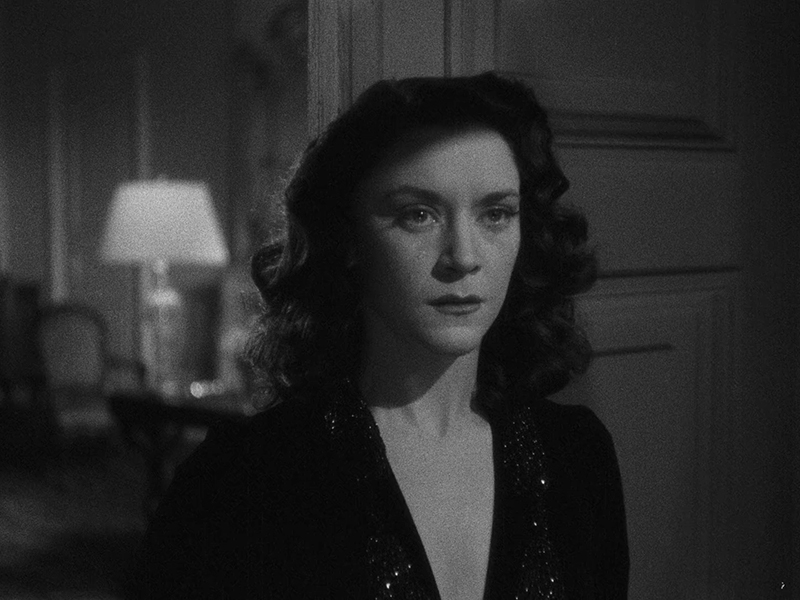
This love story follows the maneuverings of a society lady as she connives to initiate a scandalous affair between her aristocratic ex-lover and a prostitute. Inspired by an episode of Diderot’s Jacques le fataliste, dialogued by Cocteau, Les dames du bois de Boulogne is shot at the end of the Occupation in chaotic conditions: scarcity of film, power restrictions, bombing alerts. It was, in a way, an opportunity for Bresson to experiment with an unadorned style, devoid of all artifice, which would later characterise all his work. In his search for a form of emptiness around the characters, he directed, for the last time, “star” actors and henceforth only called upon non-professionals, “models”.
« Il n’a fallu que le bruit d’un essuie-glace d’automobile sur un texte de Diderot pour en faire un dialogue racinien. »
André Bazin
« La vengeance exercée à l’encontre de Jean, qui ne l’aime plus, par Hélène, sa maîtresse. D'après Diderot. J’admire beaucoup Bresson, pratiquement j’aime tous ses films. Bresson est un des rares à avoir vraiment un langage cinématographique, à avoir une langue très belle, très claire, très pure. »
Jacques Demy
“The question of acting or of non-acting is unavoidable, particularly with Les dames, where Bresson used professional actors in all principal roles for the last time. It seems likely that it was precisely the problems of working with professionals on Les dames which led to their drastic reduction in Journal and total exclusion thereafter. But knowing that Bresson had rows with Maria Casarès does not affect interpretation or evaluation. Indeed her performance is practically the only aspect of the lrn to be universally admired, and the reason for its success may be hinted at in Godard’s interview question (May 1966): ‘Would it interest you, for example, to make a film about an actor? And if you had it to make, how would you make it? l mean a film on the act of playing.‘ Les dames was already that film. Though Helene must spend vast tracts of her time alone – and this is a large part of her tragedy – we catch only the briefest glimpses of her temps-mort, perhaps as she is petting her little white dog; nearly always we see her acting a role – with Jean, with Agnes, with Mme D., with Jacquces. Once she has completed her scheme and revealed it to Jean, her role is played out – as the acceleration of Jean’s car wipes her of the screen, for the last time, she has literally nothing more to do or say.”
Daniel Millar1
- 1Daniel Millar, “Les dames du Bois de Bologne,” in The Films of Robert Bresson, ed. by Ian Cameron (New York: Praeger, 1969).

